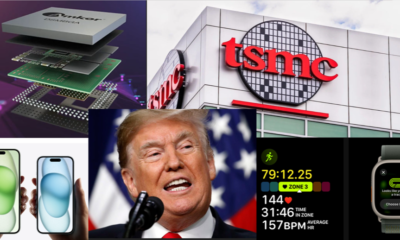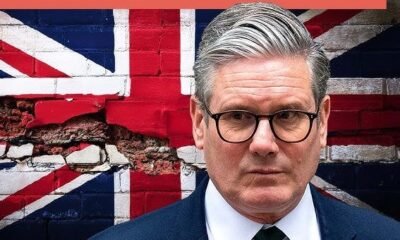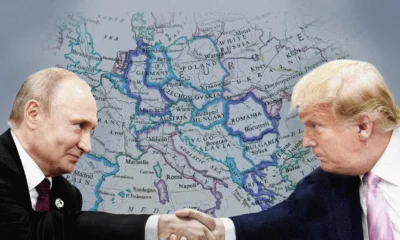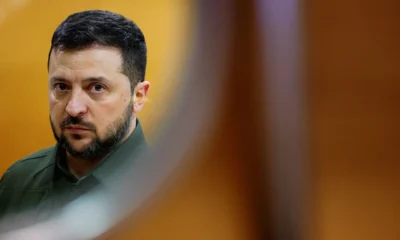In a single phone call, Donald Trump has completely flipped the script on the Russia-Ukraine war. For the past three years, Putin has been treated as a pariah by the U.S. That era, however, is over. Trump has essentially rolled out the red carpet for Putin, signaling that he’s open to bringing him back into the fold—and maybe even striking up renewed friendship.
No surprises here—Russia is thrilled. Putin has always wanted to negotiate directly with the U.S., cutting Ukraine out of the equation. And now, thanks to Trump, that possibility looks more real than ever.
However, Trump’s phone call with Putin has landed in Ukraine like a bombshell—one that many feared was coming but hoped to avoid. The big question in Kyiv is why did Trump just give up two major bargaining chips—Ukraine’s NATO membership and occupied territories—before negotiations even began? Was this a careless move, or does he simply not care?
Many in Ukraine are asking, is Trump just looking for a quick-fix deal, regardless of how unstable it might be? Because if history is any indication, any peace deal made on shaky ground won’t last.
Meanwhile, Russian officials aren’t even pretending to slow down. Their message is clear – talks can happen, but the fighting won’t stop until they get what they want.
What’s Putin’s Game Plan?
Putin is playing the long game. He knows these talks might fail, but that doesn’t bother him, maybe because it is quite possible that he already has a strategy—flatter Trump, throw him a few so-called “concessions,” and let Trump parade them as a “huge success.” A ceasefire here, a minor withdrawal there—it’ll look great in headlines, but none of it changes Russia’s ultimate goal—a Ukraine that is weak, disarmed, and under Moscow’s thumb.
Ukraine’s Nightmare Scenario
For Zelenskyy, this is the absolute worst-case scenario. Three years of brutal war, countless lives lost, and what does Ukraine have to show for it? The dream of NATO membership slipping away and a growing fear that it was all for nothing.
Still, Zelenskyy isn’t staying silent. He made it clear on Thursday that Ukraine won’t accept a peace deal negotiated by the U.S. and Russia alone. The fact that Trump called Putin first before speaking to Kyiv? Not a good look. It throws into doubt the West’s previous commitment to “nothing about Ukraine without Ukraine.”
Zelenskyy is firm—Trump should not meet with Putin before meeting with him. “We, as a sovereign country, simply will not accept any agreements without us,” he told journalists. He also stressed that Europe must be at the table.
“If calls are just calls, I understand. But meetings—those are our priority. Ukraine, America, and only after those meetings, after working out a plan to stop Putin, would it be fair to talk with the Russians,” he said.
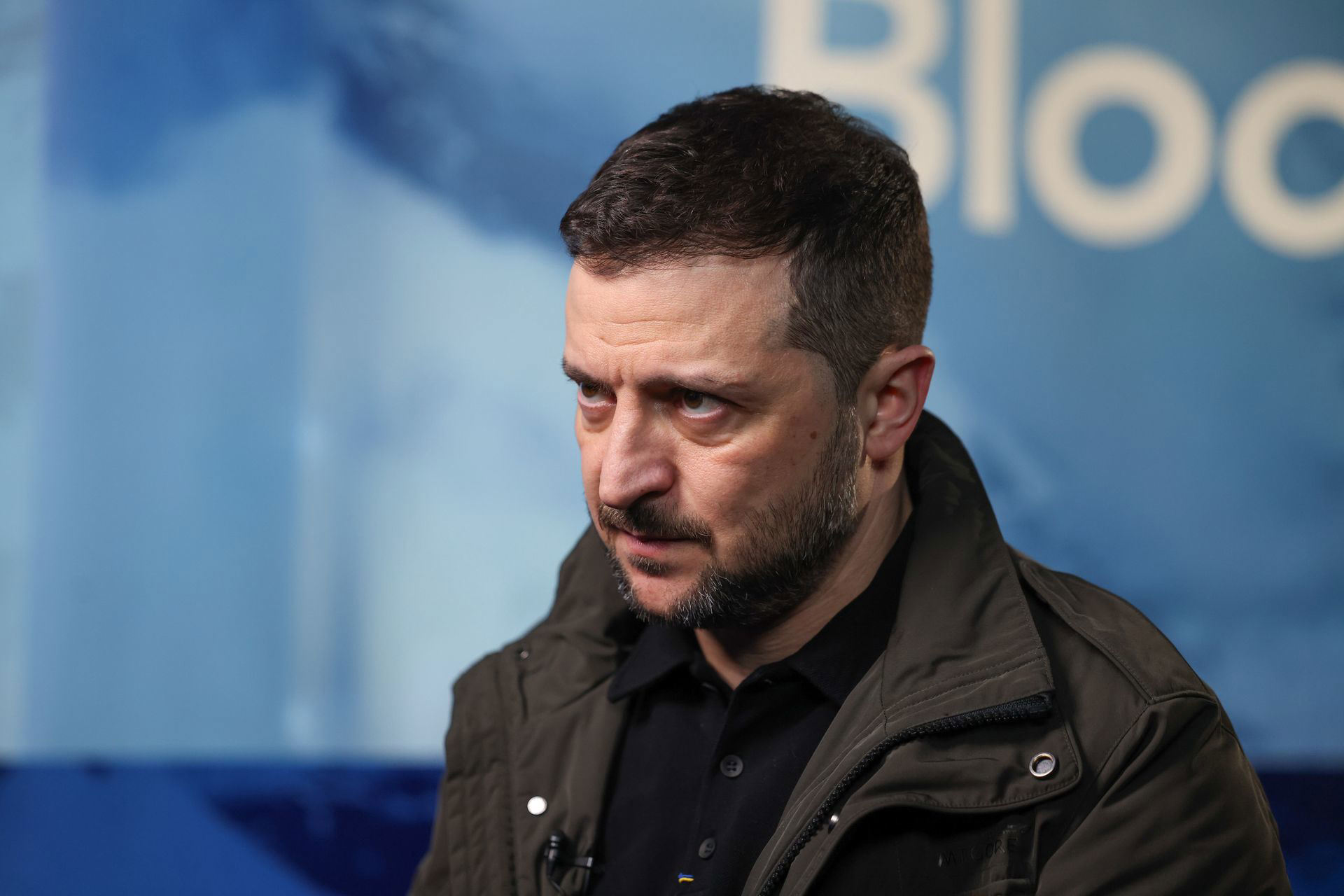
What Does Zelenskyy Want?
Ukraine has long understood that full NATO membership and reclaiming all its lost territory by force might never be on the table. But what is critical now, according to Ukrainian officials, is ensuring that Russia can’t just regroup and attack again in the future.
So what could be the key here? Security guarantees. If Ukraine continues to receive enough weapons and support from the U.S. and Europe even after a ceasefire, that could be enough to keep Russia in check. A strong Ukrainian military, backed by Western arms and assistance, is the best defense.
Trump, for his part, said on Wednesday that he would continue supporting Ukraine to prevent Putin from “saying he won.” But what does that actually mean in practice?
Zelenskyy, meanwhile, is already thinking ahead. He has spoken about a “Plan B” if NATO membership is off the table—Ukraine must essentially “build NATO” within its borders. That means developing a heavily armed, self-sufficient military backed by European peacekeeping troops.
Europe Is On Edge
European leaders aren’t taking Trump’s signals lightly. They’re worried—and vocal about it.
Germany’s Defense Minister Boris Pistorius called it “regrettable” that Trump had already given public concessions to Putin before negotiations had even begun.
Estonia’s Defense Minister Hanno Pevkur echoed that sentiment, warning, “We must not hand Russia any advantage before negotiations even begin.”
But is it all doom and gloom? Not necessarily. Trump’s stance on Ukraine has been known for months, and U.S. Defense Secretary Pete Hegseth’s statements on Wednesday didn’t exactly shake the foundation.
Hegseth made it clear that returning to Ukraine’s pre-war borders is an “unrealistic objective” in any peace talks. NATO membership? Also not happening.
“Chasing this illusionary goal will only prolong the war and cause more suffering,” Hegseth warned.
Instead, there’s growing discussion about deploying European or even non-European peacekeeping forces to police a demilitarized zone in Ukraine. The problem with this is that it would require an enormous force—Zelenskyy estimates at least 100,000 troops, which is almost certainly beyond what European nations can muster. And let’s not forget, Putin would have to agree to it in the first place.
The Big Meeting
All eyes are now on the Munich Security Conference, which kicks off Friday. Vice President JD Vance and Zelenskyy will be meeting in what could be a defining moment for Ukraine’s future. Zelenskyy needs to make Ukraine’s minimum requirements crystal clear. Because right now, the bets couldn’t be higher.
Still, there’s a growing sense of unease. While, Trump and his defense secretary, Pete Hegseth, insist that Ukraine will be part of any negotiations, but Trump’s own response on Wednesday raised eyebrows. When asked if he sees Ukraine as an equal partner in peace talks, his answer was simply— “That’s an interesting question.”
And that’s exactly what Ukraine and the world fear.

Why Trump-Putin Developments Are a Nightmare for Europe?
Trump’s warming up to Putin is more than just a diplomatic shift—it’s a geopolitical earthquake, and Europe is right at the fault line. While much of the focus has been on how this impacts Ukraine, the real long-term consequences could be far more disastrous for the entire continent.
1) The End of European Strategic Autonomy?
For years, Europe has relied on the U.S. security umbrella, particularly through NATO, to deter Russian aggression. If Trump pulls back on that commitment, as he has hinted before, European nations will be forced to rethink their entire defense strategy. But can they fill the void? Defense budgets are stretched, military capabilities vary widely, and there is no single leader who can rally Europe into a cohesive security force.
This creates the worst possible scenario—Russia, emboldened, and Europe, fractured.
2) A Green Light for Future Russian Expansion?
If Trump signals that he’s willing to make deals directly with Putin—potentially even over the heads of European allies—what’s stopping Russia from setting its sights beyond Ukraine? The Baltic states, already nervous, would be next in line. Moldova, another vulnerable neighbor, could be at risk too.
And if Putin gets what he wants in Ukraine, why wouldn’t he push further? The post-Cold War European security order could unravel faster than anyone imagined.
3) The Death of Western Consensus?
Until now, the West has largely been unified in its support for Ukraine, imposing heavy sanctions on Russia and keeping Putin in diplomatic isolation. But Trump’s approach threatens to splinter this unity.
If European leaders begin to doubt U.S. commitment, some may start hedging their bets—perhaps negotiating separately with Moscow, or pulling back on military aid to Ukraine, knowing that a deal might be forced upon them anyway. A divided West plays right into Putin’s hands.
Has Putin Already Won?
It depends on how you define “victory.” If winning means capturing all of Ukraine, then no—he hasn’t. The war has cost Russia dearly, and Ukraine is still standing, bloodied but unbroken.
But if winning means permanently weakening Ukraine, securing a direct line to negotiate with the U.S., and fracturing Western unity—then yes, Putin is dangerously close to victory.
What’s more, he doesn’t even need to stop fighting. Even if negotiations start, Russia can keep up military pressure, forcing Ukraine into accepting humiliating terms while the world watches. A frozen conflict, where Ukraine remains permanently vulnerable, would be a win for Moscow.
Can Europe Stop This?
Europe has two choices—either step up and fill the gap if the U.S. steps back, or accept a new reality where Russia gets to dictate terms. The coming months will reveal which path they choose, nevertheless this is perhaps the most dangerous moment for European security since the Cold War!




